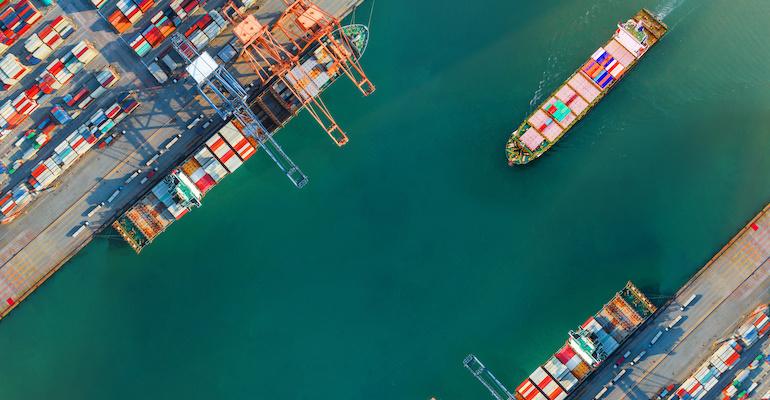The Baltic FBX monthly report notes that the FBX index has risen for the first time since April and is mainly driven by rate increases achieved in the transpacific trade between Asia and the US West Coast.
According to the FBX the index increased 4% in July taking global average rates to $1,323 per feu, “This rate is just below 2019 levels and 78% lower than a year ago”.
In the second half of last month transpacific rates climbed steeply, by 28% compared with June levels, reaching $1,527 per feu, comparable to 2019 rate levels. While rates to the US East Coast increased 18% to $2,598 per feu, still 13% below 2019.
Low water in the Panama Canal in July has affected services to the East Coast and that is expected to be exacerbated during this month.
“Volumes likely increased moderately compared to June at the start of peak season. However, the bigger drivers for rate behaviour were stricter capacity management by carriers contending with demand well below that of the last two years,” noted the FBX report.
Meanwhile, more generally consultant at Vespucci Maritime, Lars Jensen, said that the traditional peak season on the major trades should now be gearing up, as shippers in Europe and the US book freight for the thanksgiving and the Christmas seasons, “although the data does not (yet) support that notion,” noted Jensen.
Instead, Jensen said, “The latest data relate to May where global demand in terms of TEU*Miles was basically languishing at a minor decline of -2.5% year-on-year and a decline of -1.1% compared to May 2019 before the pandemic.”
That was an improvement on the period between September last year and February this year where the fall in rates was “much more severe,” argued Jensen.
Newbuilding deliveries, for vessels ordered in the boom years of 2021-22, have seen the container fleet capacity boosted by 4.3%, or 6.2% if the fleet is compared to early August 2022.
“Such capacity growth, when seen in the light of the weak demand growth, would either lead to a continuing downturn in freight rates or a much more active approach by the carriers to limit the capacity on offer,” explained Jensen, who added that both approaches had been seen last month with different trades experiencing different impacts.
Listen to a podcast on the outlook for container shipping
However, Drewry Shipping consultants has pointed out that the majority of ships that will be delivered this year will come in the next few months, so that will have a dampening effect on rate levels.
According to Drewry MD Philip Damas, Drewry has seen an increase of 40% in rates on the Asia to US West Coast, in the four weeks up to the end of last week.
The trend had been expected by Drewry following a survey conducted earlier in the summer.
“It’s difficult to understand the reasons for this increase,” said Damas. “It could be a range of events that are affecting the market, including that demand is picking up due to the peak season starting.” He also went on to say that capacity constraints caused by the Panama Canal low water problems and the challenges from the industrial action in Canada, while the carriers themselves were also managing capacity through the blanking of sailings.
However, Drewry believes that the upturn in rate levels will not last with the lifting of Panama Canal restrictions, most likely in September and the settling of the Canadian port strike will expand capacity again.
Damas also pointed to the fact that the delivery schedule for new containerships is skewed to the last few months of this year. The consultant expects fleet growth of 5.1% this year, after slippage and scrapping of vessels, with similar net increases in capacity in 2024 and 2025 of 6.4% and 5.4% respectively.
It is the speed of the growth in the fleet which will have the greatest impact on the container shipping market, explained Damas.
“It took the industry roughly half a century to reach the first 5m teu waypoint in 2001, but then only another six years to add the next 5m teu. The respective leaps to 15m teu, 20m teu and 25m teu were achieved in shorter intervals of between four and five years. If our prediction is correct, the step up from 25m to 30m will have taken about three-and-a-half years by the time it happens.”
Copyright © 2024. All rights reserved. Seatrade, a trading name of Informa Markets (UK) Limited.
Add Seatrade Maritime News to your Google News feed.  |

